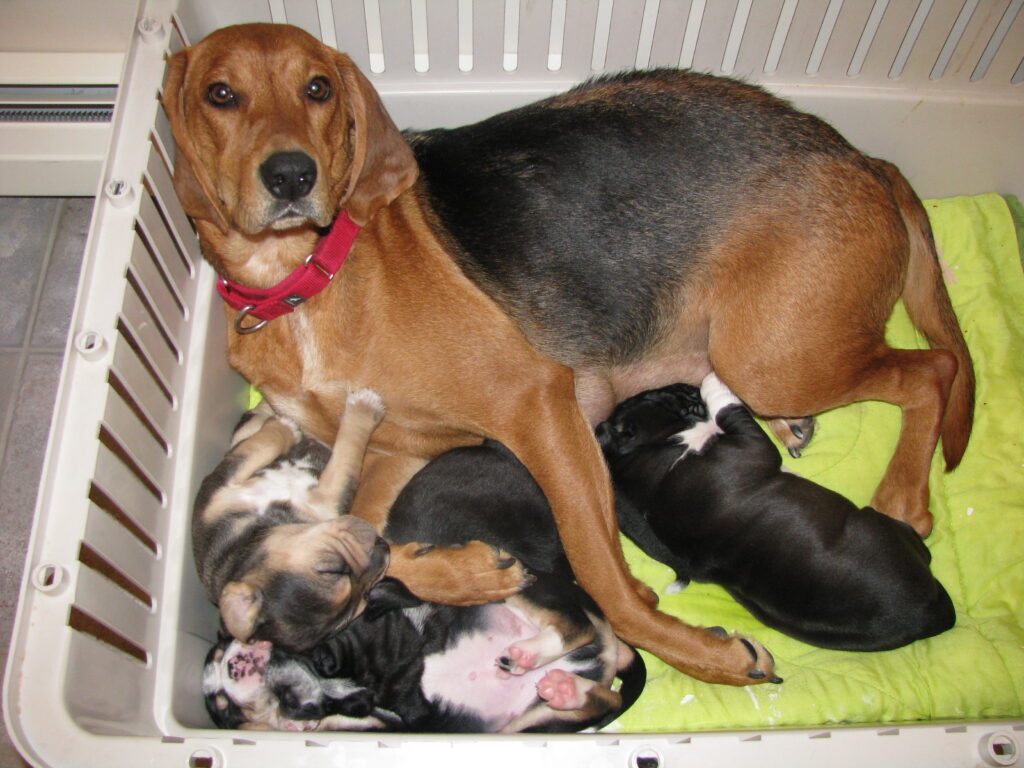Does your hound constantly have her nose to the ground? Is your retriever pup a bit too mouthy? Is your Pyrenees, Chow or Catahoula mix

acting a bit growly with strangers? Does your terrier like to grab and shake toys? How about your adorable herder? Ever nipped at anyones heels?
Ray Coppenger, author of Dogs: A New Understanding of Canine Origin, Behavior and Evolution explains Breed Specific Behaviors. Not that long ago, dogs were chosen and bred based on their ability to be useful. For example, dogs were kept around if they were able to:
- Protect the herd from predators by alarm barking.
- Could find or flush out the bird or grouse to be hunted.
- Retrieve a kill after it was shot.
- Kill pesky rodents and small animals that jeopardized the crops.
Desired traits which were specifically bred for in the past may not be so desired for a family pet. A lazy, relaxed calm dog was not as desirable and therefore not chosen for breeding.
Isolated Behaviors in Breeds
I recently participated in a Webinar by Ken McCort. Here are some things I took away:
- Hound dogs were used to search and track, which meant their nose needed to be on the ground.
- Sporting dogs were used to search, stalk and point at their prey.
- Herders were bred to drive and chase, and, yes, even nip at heals when needed. Example, the Corgi was encouraged to nip the heels and bred low to avoid the kick back from the hoofed animal they were moving. Shelties were bred to bark when herding as they used noise to drive the herd.
- Terriers and heelers were bred to grab and hold and were even knows as “catch dogs” as this was a desired motor pattern.
- Retrievers were used to bring birds back to their handler using a soft mouth.
To learn more, here’s a useful link: Ken McCort, Wolf Park Educator.
If you find yourself wanting to change a behavior in your dog, first

consider if this behavior is a normal one to your dog’s breed. You may never extinguish a behavior trait that your dog was specifically bred for. While this behavior can be modified by rewarding another behavior, you must be realistic with your expectations during the behavior modification process.


